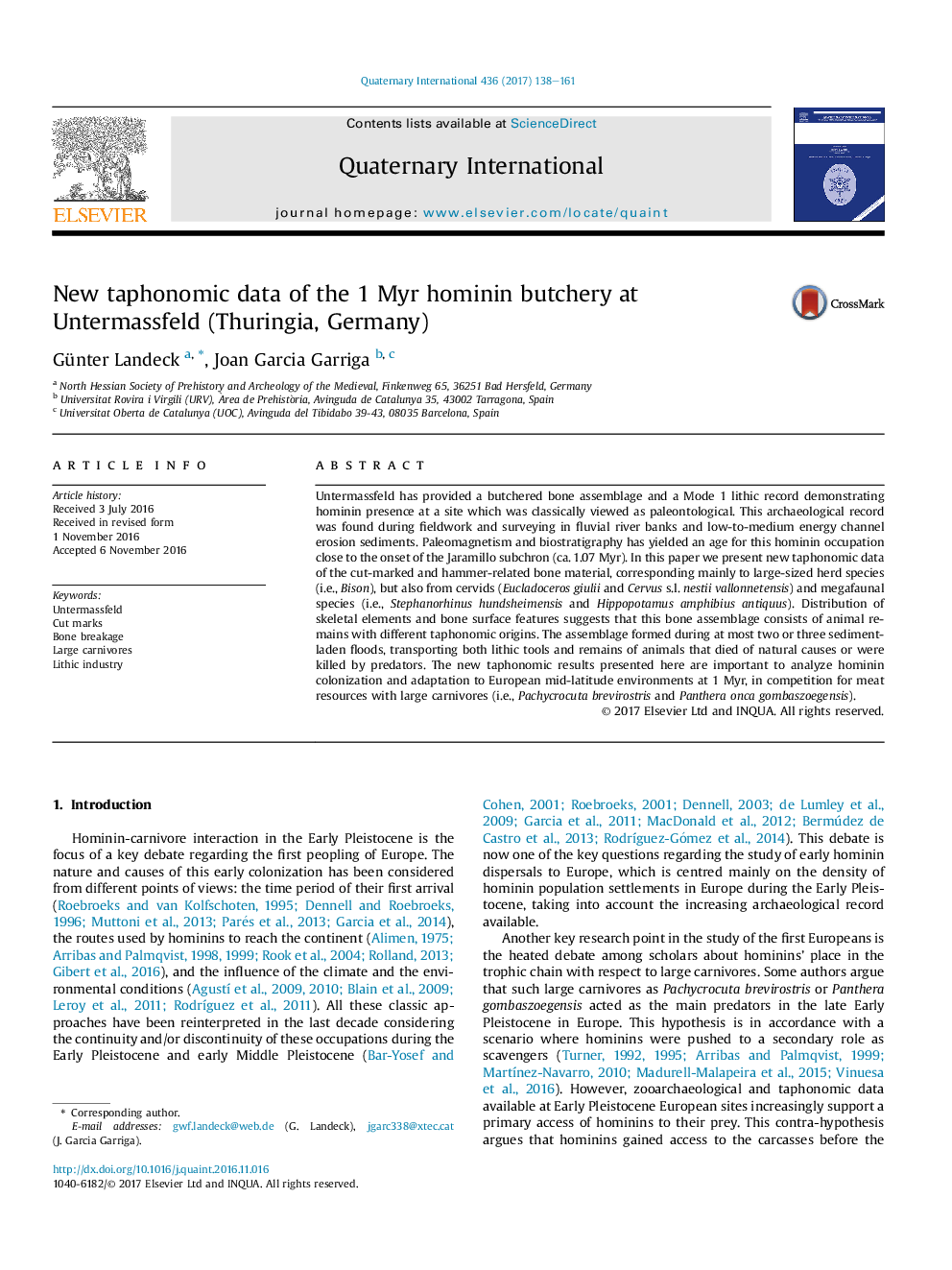| Article ID | Journal | Published Year | Pages | File Type |
|---|---|---|---|---|
| 5113548 | Quaternary International | 2017 | 24 Pages |
Abstract
Untermassfeld has provided a butchered bone assemblage and a Mode 1 lithic record demonstrating hominin presence at a site which was classically viewed as paleontological. This archaeological record was found during fieldwork and surveying in fluvial river banks and low-to-medium energy channel erosion sediments. Paleomagnetism and biostratigraphy has yielded an age for this hominin occupation close to the onset of the Jaramillo subchron (ca. 1.07 Myr). In this paper we present new taphonomic data of the cut-marked and hammer-related bone material, corresponding mainly to large-sized herd species (i.e., Bison), but also from cervids (Eucladoceros giulii and Cervus s.l. nestii vallonnetensis) and megafaunal species (i.e., Stephanorhinus hundsheimensis and Hippopotamus amphibius antiquus). Distribution of skeletal elements and bone surface features suggests that this bone assemblage consists of animal remains with different taphonomic origins. The assemblage formed during at most two or three sediment-laden floods, transporting both lithic tools and remains of animals that died of natural causes or were killed by predators. The new taphonomic results presented here are important to analyze hominin colonization and adaptation to European mid-latitude environments at 1 Myr, in competition for meat resources with large carnivores (i.e., Pachycrocuta brevirostris and Panthera onca gombaszoegensis).
Related Topics
Physical Sciences and Engineering
Earth and Planetary Sciences
Geology
Authors
Günter Landeck, Joan Garcia Garriga,
